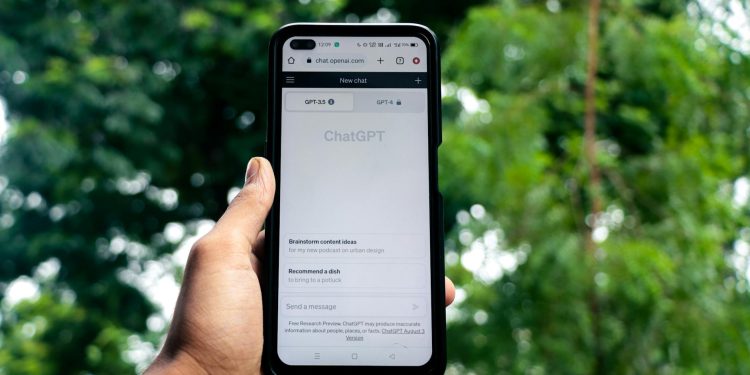Understanding Prompt Generation in AI
AI's like a newborn puppy—lots of potential, but you gotta guide it well. Effective prompt generation is your leash, controlling just where this artificial intelligence goes. When you get into it, prompt crafting is like being a wordsmith; it's about striking a balance, adapting language, and getting your AI to sing rather than just bark.
The Importance of Prompt Crafting
Prompt crafting, yep, it's the secret sauce that makes your AI responses zing with accuracy and relevance. Creating those killer prompts is about understanding how the AI thinks—like trying to see the world through its ones and zeros.
Here's why it matters: good prompts drive AI to give you just what you want. Think of it like setting the stage. You whisper the lines; AI delivers the performance. Write a dud, and you might get improv you definitely didn't ask for.
Some tricks to get your prompts spotlight-ready:
- Keep it short and sweet—less is more.
- Ensure the prompt has heart, fitting snugly within the context.
- Be detailed but not overbearing.
Take the plunge for more on how to nail prompt crafting in AI.
How Prompt Generation Boosts AI's Superpowers
With well-crafted prompts, your AI suddenly has turbo boosters. It's like going from a paper plane to a jet fighter, in terms of creativity, accuracy, and pure speed.
Superpower Boosters Include:
-
Language Mastery: Good prompts help AI get what you're truly after with your words, leading to chat that's more like a brilliant convo at your local cafe.
-
Jack-of-All-Trades: Whether spinning tales in AI storytelling or keeping chatbots witty, prompt wizardry works across the board.
-
Spot-On Context: Using contextual prompts keeps your AI locked in and on target, dodging awkward tangents.
-
Speed: Tuned prompts mean less cleanup after the fact. It's like giving your AI a machete rather than a butter knife to cut through tasks.
-
Creative Genius: From AI-generated art to imaginative vistas, strategic prompts let AI's imagination fly.
Get cozy with prompt crafting and watch your AI models dazzle. For all the genius techniques, swing by generative AI magic. Want more oomph in your AI? Check out this detective's guide to unlocking AI's full promise: sharpening your prompt game.
Strategies for Effective Prompt Generation
So you're knee-deep in artificial intelligence and need some solid strategies to get those AI prompts on point. Let's break down the ways you can dial up the quality and relevance of them AI gems by tapping into natural language processing, machine learning, and a bit of sprinkle-on fine-tuning magic.
Natural Language Processing (NLP) Tricks
NLP isn't just fancy talk—it’s the backbone of killer prompt generation. By using techniques like tokenization, we're talking breaking stuff into bite-sized chunks; named entity recognition (NER) for spotting the folks and places; and sentiment analysis for catching the feels.
Favorite NLP Tricks
| Trick Name | What It Does |
|---|---|
| Tokenization | Breaks text down to its nitty-gritty bits. |
| Named Entity Recognition (NER) | Finds names of people, places, and such. |
| Sentiment Analysis | Figures out the vibe of a stretch of text. |
| Part-of-Speech Tagging | Pins down the grammar bits—like which word fits where. |
Dive deeper into NLP goodness in our piece on shaping up AI prompts.
Tapping Machine Learning Models
Machine learning models? They're like the secret sauce for cranking out spot-on prompts. They roll with the data, spotting patterns, and figuring out exactly what you’re after. We’re talking supervised, unsupervised, and even reinforcement learning.
Machine Learning Model Types
| Model Style | What It’s All About |
|---|---|
| Supervised Learning | Trained with labeled stuff, learning connections between what goes in and what comes out. |
| Unsupervised Learning | Discovers patterns without a cheat sheet, seriously useful for finding hidden gems. |
| Reinforcement Learning | Susses out how to win the game through rewards and penalties. |
Need more on this? Check out our guide to strategizing prompt-driven AI.
Polishing Generative Models
Fine-tuning models like GPT-3? It's like giving your old jeans a fresh hem—tiny tweaks mean bigger payoffs. It's all about molding those parameters to better match the tasks at hand. It takes smart data choices and a tweak here, a twist there.
Steps in Fine-Tuning
- Get That Data: Snag and prep data that's right on the money.
- Kickstart Training: Teach the model using your verified stash of info.
- Check It Out: See how the model's rolling with it against some tests.
- Tweak Away: Make the tweaks and dial those outputs where they’ve gotta go.
These moves are gold in tuning up generative models for whatever you need. Get down with more prompt details in our post on customizing prompts for AI outcomes.
By throwing in these strategies—leaning into NLP, maximizing machine learning, and nailing the fine-tuning—you’re setting your AI prompts to really pop. For more juicy details on mastering the art of prompt-making, check out our resources on deep learning prompt finesse and designing sharp AI prompts.
Unveiling Advanced Prompt Techniques
In the world of generative AI, nailing down the right prompt techniques is a game changer. This section gets into the thick of it with three styles: semantic prompting, contextual prompting, and domain-specific prompting.
Semantic Prompting
Semantic prompting is all about getting the gist of words—capturing their essence to crank out spot-on AI responses. By honing in on the nitty-gritty of language and how words play together, you're adjusting those generative gears to spit out outputs that make sense and fit like a glove.
| Feature | Description |
|---|---|
| Core Concept | Plays with the meaning and links between words |
| Benefit | Boosts AI's accuracy and relevance |
| Application | Improves tasks in language processing |
Getting your head around semantic prompting means your prompts are going to lead to more insightful AI chatter. Want to dig deeper? Check our piece on how prompts shape AI behavior.
Contextual Prompting
Contextual prompting doesn't just look at the words—it's about the big picture. This approach packs prompts with context clues, giving AI the background info to nudge it toward responses that are rich in detail and hit the mark.
| Feature | Description |
|---|---|
| Core Concept | Factors in the bigger picture around prompts |
| Benefit | Crafts responses with finesse and context |
| Application | Great for storytelling and improving chatbots |
Using these prompts means crafting AI stuff that’s bang on, tailored to fit the scene you're working with. Want more tricks on contextual prompts? Peek at our guide on designing prompts for AI chatbots.
Domain-Specific Prompting
Domain-specific prompting gears prompts toward a particular lingo and nuances of a niche or profession. By tuning these to fit industry chatter, you're making sure those AI outputs are super sharp and precisely relevant.
| Feature | Description |
|---|---|
| Core Concept | Tailors prompts to niche lingo or sectors |
| Benefit | Nails down specialized and spot-on outputs |
| Application | Perfect for tech docs, legalese, medical scripts |
Using prompts that speak the language your field listens to means AI will hit all the right notes. For more insights, scope out our article on prompt customization for AI fields.
Get your head around these advanced prompting tricks, and you'll crank up your generative AI’s performance like never before. Dive a bit deeper with our chats on prompt engineering in deep learning and high-level prompt practices.
Implementing Prompt Generation in AI Systems
Getting your AI systems to spit out the right stuff is like training a puppy—only you don’t need treats, you need prompts. Let's jump right into how you can get your AI to sing on cue using these easy-breezy strategies.
Integrating Prompt Generation into AI Models
Embedding prompt generation into your AI models isn’t just a fancy trick; it's the driving force behind sharp responses and making your AI sound like it didn't drop out of robot school. Here’s how you can score a win:
-
Define What You Want: First, pin down what you’re hoping to get out of this. Are you aiming for sharper responses or trying to make sure your AI doesn't go rogue?
-
Pick the Right Tools: Choose the algorithms that work with what you’ve got in mind. Stick with the classics like NLP techniques and machine learning models—they’re solid contenders.
-
Get Training: Show your AI plenty of different data sets, so it learns to generate prompts like a pro. You can check out our piece on prompt-driven AI development strategies for a deeper dive.
-
Integration Tools: Grab the right tools to hook up the prompt generation features with your existing systems. Think of them as your trusty toolbox.
-
API Power: Utilize APIs to handle the nuts and bolts of prompt creation and rollout, which means less time wrestling with code and more time high-fiving yourself.
Training and Testing Prompt-driven AI Systems
Training and testing aren’t just for marathon runners—your prompt-driven AI needs it to get its act together too.
-
Data Ready, Get Set, Go: Pull together data from all over to make sure your AI is ready for anything. Cover as many scenarios as you can think of for those nifty prompts.
-
Model Bootcamp: Use training techniques to teach your AI the prompt ways. It's kind of like putting it through AI bootcamp, so it knows its stuff inside and out.
-
Check, Check, Check: Use validation sets to put those AI-generated prompts under the microscope. Test for areas needing a bit of TLC. More pro tips over at creating effective prompts for AI training.
-
Metric Madness: Keep tabs on how your system’s doing with metrics like precision, recall, and F1-score. Track them neatly:
Metric What It Means Score Precision How many guesses were actually right 0.88 Recall How many right guesses out of all the possible ones 0.85 F1-Score Mixing precision and recall perfectly 0.86 -
Test, Tweak, Repeat: Keep testing and tweaking your AI models. It’s like polishing a diamond – the more you do it, the better it shines. For a peek behind the curtain, look at adaptive prompting strategies.
-
Hammer Out the Kinks: Spot and fix any troublemakers during testing. Fixing prompts using feedback makes sure your AI is all set for showtime.
By tossing prompt generation into your AI projects and making sure everything's running like a Swiss watch, you're setting the stage for smarter, sharper AI action. For a closer look at boosting those prompts, check out optimizing prompts for AI algorithms.
Optimizing Prompt Engineering for Success
Continuous Learning and Tweaking
In the fast-paced area of artificial intelligence, keeping things fresh and tweaking constantly is the name of the game. By always fine-tuning and spiffing up your prompts based on feedback and performance, you're ensuring those AI systems stay sharp and on the money. Set yourself up in a never-ending loop of testing, learning, and tweaking to make sure your prompts line up with exactly what your apps need. Want some insider tips on crafting prompts? Check out creating effective prompts for AI training.
| Tweak Cycle | What You’re Doing |
|---|---|
| Initial Test Drive | See if the prompt’s doing its job and collect feedback. |
| Gather Feedback | Dive into performance metrics and what users are saying. |
| Prompt Makeover | Tweak prompts based on the data haul. |
| Keep Testing | Do it all over again to keep prompts sharp and snappy. |
Keeping Tabs on Prompt Performance
Keeping an eagle eye on how well your prompts are working is the secret sauce to killer prompt engineering. By eyeballing the crucial stats, you can spotlight what’s working like a charm and what’s tripping up. Regular check-ins on how your prompts are doing is the way to keep AI smooth and your audience happy. Dive deeper with our goodies on prompt refinement for optimal AI performance.
| Measure | What It Tells You | Aim |
|---|---|---|
| Accuracy | How often do prompts score with the right AI answer? | Sky-high |
| User Happiness | What are folks saying about their AI chats? | Pumped up |
| Reply Speed | How zippy is AI at spitting out answers? | Lightning-fast |
| Prompt Variety | How creative and diverse are the AI's answers? | As varied as possible |
Bendy Prompting Strategies
Bendy prompting is all about switching things up based on what’s going down and who’s involved. By mixing machine learning with context clues, prompts can morph to hit the sweet spot for your users each time. This flexible tactic ensures AI can tackle a mess of situations while keeping things personal. Craving more on these clever tricks? Dig into our piece on adaptive prompting strategies.
| Flex Move | What It Does | Snazzy Example |
|---|---|---|
| Context Tune-Up | Shift prompts based on what users just said. | Tweaking chatbot prompts by peeking at chat history. |
| Personalized Nudge | Craft prompts just how a user likes them. | Tailoring prompts with a user's past searches in mind. |
| Scenario Swap | Adjust prompts for the scene at hand. | Changing prompts during internet rush hours for smoother chats. |
By rolling out these moves, you're setting up prompt engineering for smashing success, keeping AI models nimble, dead-on, and user-loving. Want a deep dive into these strategies? Hit up optimizing prompts for AI algorithms and improving AI output through effective prompts.
Future Trends in Prompt Generation for AI
Evolving Prompt Generation Techniques
The way we make prompts for AI is always getting better as new tech needs smarter ideas. With AI getting brainier, how we create prompts mirrors this leap. Fresh methods like reinforcement learning and few-shot learning are in the mix. These aren't just fancy words—these methods help AI get what you're saying and answer you with the kind of crispness and relevance that's pretty much spot-on.
If you're curious about these cutting-edge tactics, check out our article on generative AI prompt techniques.
Ethical Considerations in Prompt Engineering
Getting prompts right brings its own bag of responsibilities. If bias sneaks in, then guess what, your AI system might start giving skewed results. That's not cool, especially when important decisions are on the line. Making sure we play fair involves pouring over diverse datasets and employing steadfast checks to keep things on the straight and narrow. Fairness and transparency shouldn’t just be buzzwords—they need to be the heart of your process.
To get a deeper dive into tackling these ethical challenges, mosey over to our article on prompt engineering in AI.
Promising Applications of Advanced Prompt Generation
The magic of nuanced prompt-making opens doors across different fields. In healthcare, they’re game-changers for diagnosing and chatting with patients. Education? It’s like having a tutor who really knows you—personalized learning at its finest. The creative arts benefit hugely too, with AI crafting art that’s rich in context and detail thanks to smart prompts.
Here's a quick look at some snazzy uses:
| Domain | Application | Description |
|---|---|---|
| Healthcare | Diagnostic Assistance | Spot-on medical insights based on patient info and symptoms. |
| Education | Personalized Learning | Adjusting educational stuff to fit how you learn. |
| Creative Arts | AI-Generated Artwork | Crafting unique artworks driven by precise AI prompts. |
| Business | Customer Interaction | Boosting chatbots to serve up answers with slick efficiency. |
| Technology | Software Development | Helping write code snippets based on given cues. |
For a deeper dive on using these nifty techniques, take a gander at our article on prompt customization for AI applications.
By staying in tune with these trends, you're setting yourself up to get the best out of AI across the board. Hop on over to our resources on optimizing prompts for AI algorithms and prompt-driven AI development strategies for some handy-dandy advice.











